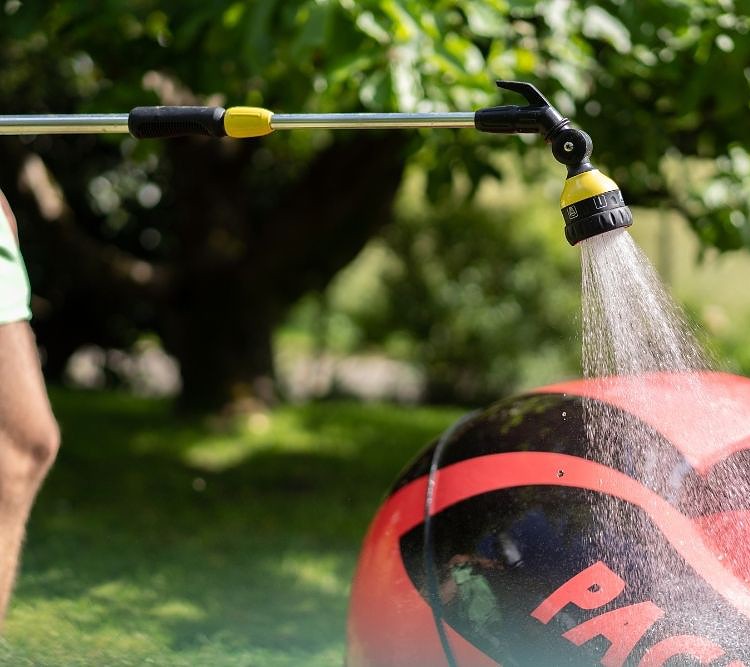If you owned your boat for a long time, the adhesive on your boat tends to wear out, leaving you with pieces of stuck glue on your dinghy.
The most common area for glue to stick on is the rub rails.
Whether you’re removing some handles or just removing a temporary glue patch off your boat, getting the old glue off your boat can be tricky.
We’ll cover which solvents to use and how to eliminate them from your dinghy.
Table of Contents
How do you remove PVC glue from a boat?
The first step to removing PVC from a boat is to identify which type of solvent to use to clean your boat.
Personally, we recommend a mixture of a 50/50 ratio of Acetone and MEK. We like this mixture because MEK is a great solution for softening the glue, while Acetone helps dissolve it.
Before cleaning, make sure to wear gloves since all cleaning solutions are toxic.
Apply some solutions to the cleaning brush and then begin rubbing it onto the area with glue.
Make sure to use a horsehair brush to prevent scratching your boat when scrubbing.
The solution helps to soften up the glue enough to where you can scrub the glue off. You may use a simply blunt putty knife to scrape the glue off.
Lastly, just rinse your boat off with soap and water to get any debris off.
How do you remove glue from the Hypalon dinghy?

Like PVC boats, you can use thinners and Acetone to remove adhesives off your Hypalon boat.
We recommend using a drill brush to help you clean the glue faster.
Especially with thicker glue pieces, it can take a lot of scrubbing to get rid of it.
We recommend doing good ol’ mechanical cleaning before resorting to chemical cleaning methods.
Simply abrade the surface area with glue until the adhesive bites.
Since Hypalon is much more durable, you won’t scratch or damage it from brushing too hard.
Solvents tend to be less effective on Hypalon material compared to PVC. If you were to use one, I’d recommend Acetone or toluene.
These are less aggressive solvents compared to MEK.
They are excellent agents to use for deactivation and reactivation of glue for Hypalon.
However, Hypalon boats can last you two or three decades if properly maintained.
Can you use Acetone on Hypalon?

Acetone is a solvent that can be used on Hypalon.
It is very effective in removing any grime or grease on your boat.
It won’t damage the neoprene rubber (Hypalon); however, it could dull the surface or smear some of the chemicals onto the boat.
Conclusion
Getting old sticky glue out of your boat can be extremely cumbersome.
Using solvents and scrubbing tools can help remove even the most rigid and thick pieces of glue.
Make sure you know whether you have a PVC or Hypalon boat before you start cleaning!

I created this site to help people – to help you – with your boat problems. Instead of helping one person at a time, I want this website to be the “one-stop-shop” for everyone’s boating concerns. Read more.


